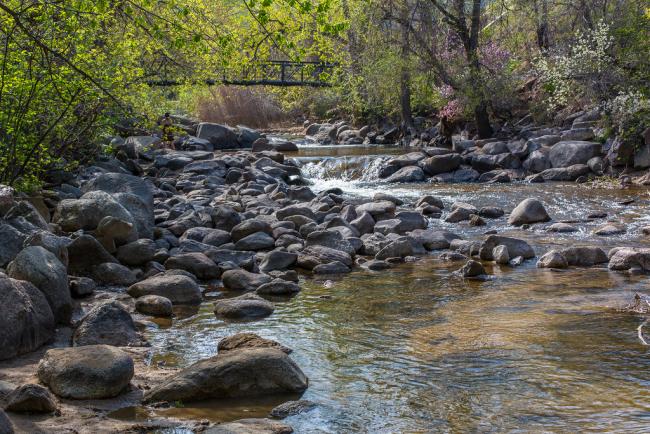This activity encourages students to collect data to answer questions, explore the roles of individual macroinvertebrates in aquatic ecosystems, and think about the health of aquatic ecosystems relative to the macroinvertebrates found.
Note: This lesson takes place at a stream where students sample macroinvertebrates. Alternatively, components of this lesson may work with access to stream data collected by someone and shared with students. Consider connecting with a local watershed association or watershed ambassador for assistance with this lesson.

Eben G. Fine Park - Boulder, CO Photo credit: Dave Dugdale
Goals Header
What Students Will Do
- Collect the data to answer questions
- Analyze data for patterns and to answer questions
Materials
User note: To make an editable copy of the teaching materials in Google Drive, select File > “Make a copy”. This will make a copy for you to save to your own drive and edit as you see fit.
Description
- Activity 1 – Engagement (15 minutes) Introduction to Habitat Patterns
Students conduct initial observations and learn how a dichotomous key is used to identify organisms.
- Activity 2 – Exploration (40 minutes) Stream Sampling
Groups of students sample two different sites along the stream.
- Activity 3 – Explanation (10 minutes) Review of Organisms Found
Students discuss as a class the types of organisms were found at each of their sampling locations.
- Activity 4 - Evaluation and Wrap-up (25 minutes) Data Analysis and Final Questions
Construct a simple summary table for the data and have the students answer some follow up questions about the lesson.


